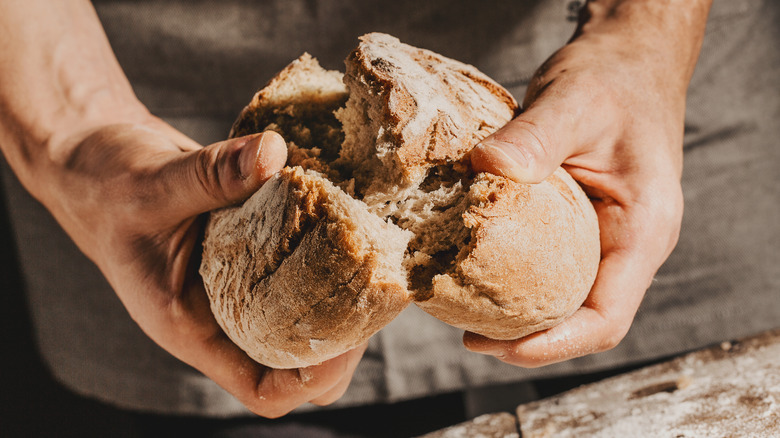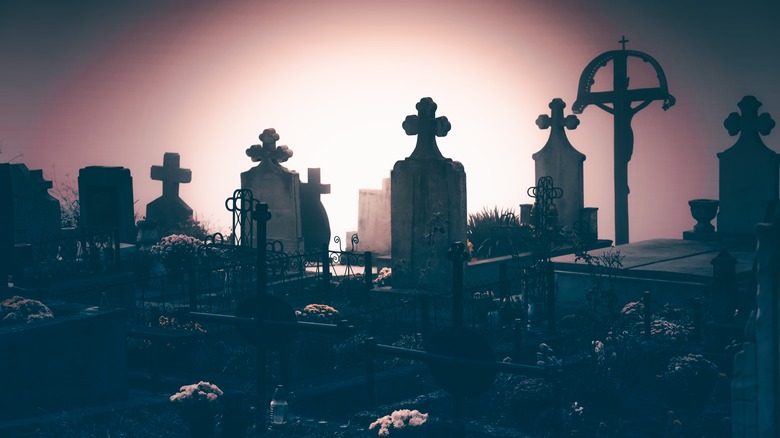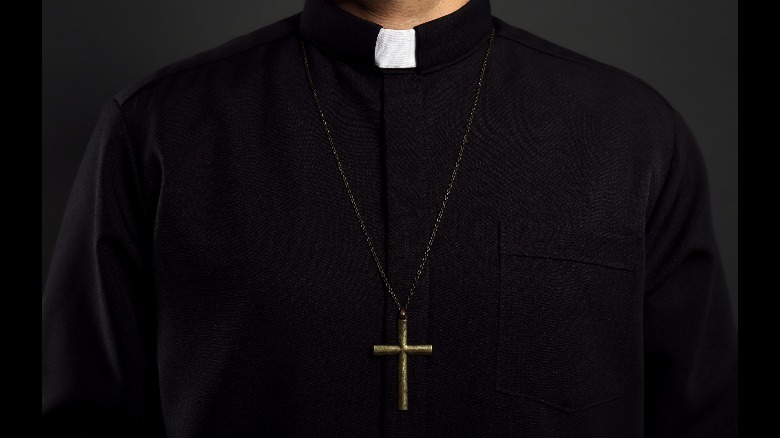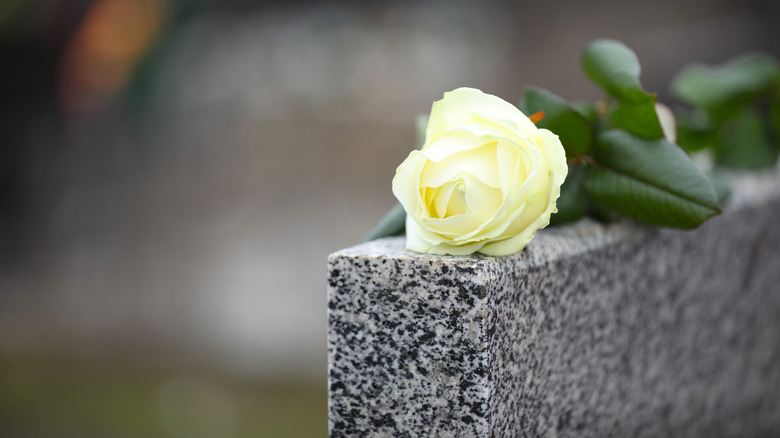Who Was The Last Recorded Sin-Eater?
In the 18th and 19th centuries, there were a number of now-defunct jobs, some of which were interesting while others bordered on ridiculous by today's standards. There were resurrectionists, mummy unrollers, and leech hunters, just to name a few. In different parts of England, there were people known as sin-eaters. These professionals were hired by family members who have had a recent death in the family, and as the name suggests, their job is to eat the sin of the dead (via Atlas Obscura).
According to History Collection, sin-eaters came about as a solution to get the dead into heaven, particularly those who didn't get the chance to confess before their passing. The profession has ties to Christian beliefs, but it was not sanctioned by the church. In fact, as noted by The Vintage News, sin-eating was not legal and was punishable by death, as Catholic Church clergy members were the only ones authorized to absolve the sins of the people. Nevertheless, that didn't stop people, mostly from the rural areas, from hiring sin-eaters to help their dead loved ones enter the gates of heaven.
The job of a sin-eater
The practice of partaking in food and drinks during or after a funeral service dates back centuries. In Wales, Scotland, and England, families who want to ensure the souls of their beloved hired sin-eaters before the body was buried. Bread or pastry was placed on the chest of the dead, and the sin-eater picked up the food and ate it, as reported by ATI. The belief was that the food absorbed the sins of the deceased, and the sin-eater, by eating the food, took the unconfessed sins. The sin-eater then uttered a prayer while relatives and friends mourned: "I give easement and rest now to thee, dear man. Come not down the lanes or in our meadows. And for thy peace, I pawn my own soul" (via The Vintage News).
According to The Irish Times, sin-eaters were paid a small amount of money and sometimes food and drinks. After the ceremony, the family members chased the sin-eater away from the home while throwing items at them.
Who were the sin-eaters?
Each village had its own sin-eater, and the person was typically ostracized because of the profession. Part of the belief was that a sin-eater was eternally damned for absorbing the sins of many people and pawning their souls; the more ceremonies a sin-eater performed, the more horrible they became as a person. As reported by History of Yesterday, sin-eaters typically lived a distance from the village and were only called when needed. They were shunned and treated like dregs of society.
Sin-eaters were usually poor people. Some came from impoverished families, while others were beggars who would do anything for a small fee and free food. The job was also dangerous, as it was illegal and could result in execution. Loved ones who hired sin-eaters were also considered blasphemers and heretics, which was why the ritual was done in secret. Villagers also avoided looking sin-eaters directly into their eyes, as they believed doing so would result in eternal damnation or being cursed, as noted by History Collection.
The last recorded sin-eater
The ritual of sin-eating declined by the early 20th century. According to Atlas Obscura, by that time, people often resorted to priests to absolve their dead relatives of their sins. It is believed that the last sin-eater was a man named Richard Munslow, who died in 1906 at the age of 73. However, unlike other sin-eaters, Munslow was not poor. In fact, he was a successful farmer before he took on the role of becoming a sin-eater.
As reported by The Guardian, Munslow did not get into the profession because of desperation. Instead, he became a sin-eater after the death of his four children. There isn't much known about Munslow, but it is believed that he may have become a sin-eater to ensure that his children were absolved of their sins and gained entry into heaven. Munslow is buried at St. Margaret's Church in Rattlinghope, England, and his gravesite also has a memorial for the four children that he lost.
Richard Munslow was honored
In 2010, a fundraiser was held in order to have Richard Munslow's grave repaired. Locals raised £1,000 (about $1,200) to honor the last sin-eater, and his grave was re-erected. Etched on the stone are the names of Munslow and his wife, Ann, as well as their four children: George, 11 weeks old; Thomas, 3 years old; James John, 6 years old; and 1-year-old Elizabeth. Many believed that it was a good idea to feature the old custom of sin-eating as part of religious history, as reported by BBC.
Since sin-eaters did their job in secrecy, there are only a few accounts of the practice, one of which was written by Matthew Moggridge in 1852, wherein he described the process, as reported by Owlcation. Sin-eating may have made its way to Appalachia, and rituals were reportedly held in West Virginia and North Carolina late into the 1950s, but there are no documents to verify the claims.




